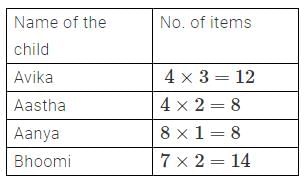Test: Data Handling - 3 - Class 3 MCQ
20 Questions MCQ Test - Test: Data Handling - 3
DIRECTION: The given pictograph shows the number of 4 different kinds of plants Mohit bought. Study the pictograph and answer the questions.
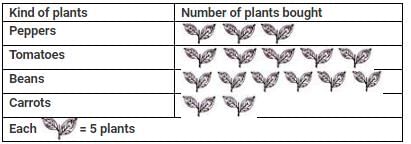
Q. What is the total number of plants he buy?

DIRECTION: The given pictograph shows the number of children who came to story hour each week. Study the pictograph and answer the following questions.

Q. How many children came to story hour in week 4?

DIRECTION: The given pictograph shows the number of children who came to story hour each week. Study the pictograph and answer the following questions.
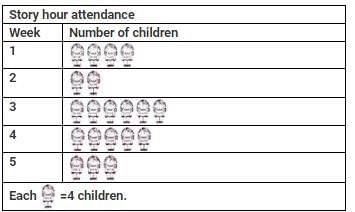
Q. How many more children came for story hour in week 3 than in week 2?

DIRECTION: The given pictograph shows the number of children who came to story hour each week. Study the pictograph and answer the following questions.

Q. Total number of children came for story hours in all weeks is _______.
DIRECTION: The given pictograph shows the number of children who came to story hour each week. Study the pictograph and answer the following questions.
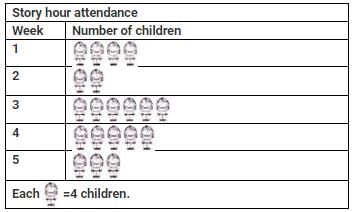
Q. How many more children came to story hour in week 1 and week 5 together than in week 3?
Study the given table and answer the question based on the data in the table.
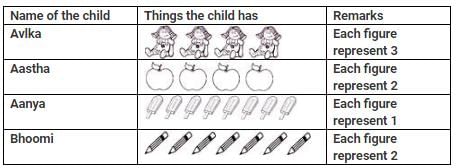
Q. Who had the maximum number of items?
The given pictograph graph shows the number of bookmarks each student made. Study the pictograph and answer the following question.
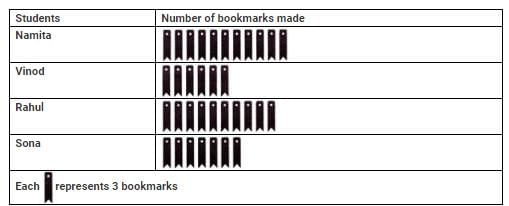
Q. How many less bookmarks did Namita make than Sona and Vinod together?
The given graph shows the number of books read by pupils in a class from July to December. Study the given graph and answer the following question.
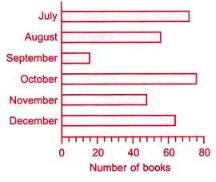
Q. How many books were read altogether from July to November?
The given pictograph shows the number of sweaters ordered of different size. Study the pictograph and answer the following question.

Q. Which size of exactly 20 sweaters were ordered?
What is the total number of cellphones in the given figure: [Here 1  = 100 cellphones]
= 100 cellphones] 
Direction: A survey was conducted on a group of 90 students. The information obtained is shown below: [Here 1  = 10 persons]
= 10 persons]
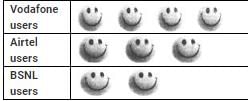
Q. The number of vodafone users is ______
Direction: A survey was conducted on a group of 90 students. The information obtained is shown below: [Here 1  = 10 persons]
= 10 persons]
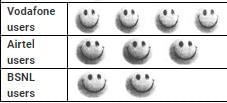
Q. The number of Airtel users is _________
Direction: A survey was conducted on a group of 90 students. The information obtained is shown below: [Here 1  = 10 persons]
= 10 persons]
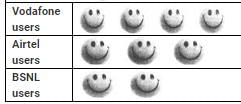
Q. The number of BSNL users is __________
If each of the following balls is arranged in a group of 5 balls, how many such groups are possible?

Find the total number of tigers in the given figure? [Here 1  = 6 tigers]
= 6 tigers]

If * represents 12 pens then which one of the following will represents 72 pens?
Direction: Read the table given below and answer the question accordingly:
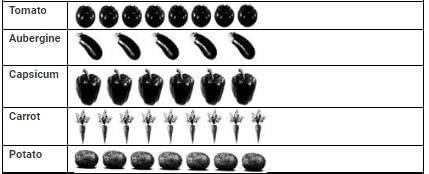
Q. How many capsicums are there?
Direction: Read the table given below and answer the question accordingly:

Q. Which kind of vegetable is minimum in number?
Direction: Read the table given below and answer the question accordingly:
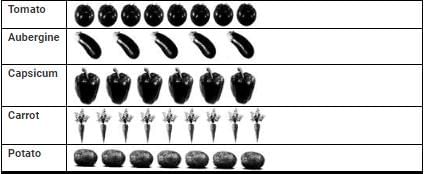
Q. Which kind of vegetable is maximum in number?
Direction: Read the table given below and answer the question accordingly:

Q. What is the total number of vegetables?



